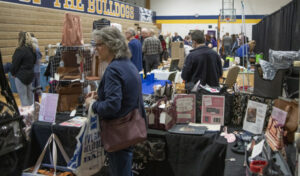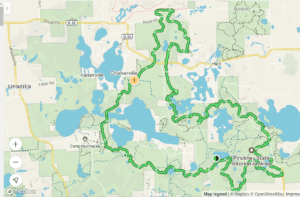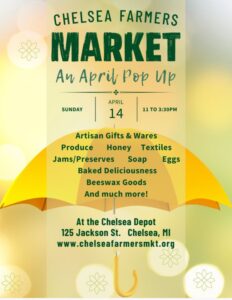
By Michigan Master Naturalist Doug Jackson
The beloved Pepé Le Pew is known for his incessant wooing after an unfortunate black cat, using tactics such as bouquets of wildflowers and flattering words like, “Mon cheri! Is it possible to be too attractive? You are ze corn beef to me, I am ze cabbage to you.”
Well, he wouldn’t have been too far off if he were to referring to himself as one of Michigan’s first wildflowers to bloom in the spring – the Skunk Cabbage.
That’s right. Perhaps the first wildflowers to emerge, bloom, and proclaim signs of spring are the ever-too-attractive Skunk Cabbage, Symplocarpus foeidus. The scientific name describes this perennial flowering plant quite well. Symplo meaning connected, carpus meaning fruit, and foetidus meaning bad smelling.
First looking like a baby Audrey II (Twoey) from the movie Little Shop of Horrors, the plant appears from the frozen snow-covered ground with a purple mottled hood structure called the spathe. Within the spathe is a knobby looking structure called the spadix. The spadix is covered with multiple little pedal-less flowers. These flowers produce the all-so-attractive scent of rotting flesh – attractive, that is, if you are a fly or a carrion beetle (and no, not a black cat), the pollinators the plants are counting on.

Skunk Cabbages are thermogenic, meaning that they produce their own heat. The emerging plants can generate heat as high as 70° F. This allows the plant to emerge from the frozen soil. When looking for skunk cabbage while there is still a little snow cover, you’ll find that the snow has melted away from the plants.
Throughout the summer, the plant matures into an expansive rosette of massive dark green leaves. In wet areas such as streamsides or swamps, you can find them sometimes carpeting the landscape. An easy spot to see them is along the bog trail at the Eddy Discovery Center.
Contrary to their name, these cabbages are not edible. Even wild animals avoid eating the leaves due to the calcium oxalate crystals in the raw foliage that causes a burning sensation and can cause the mouth and throat to swell.
Despite the burning and bad smell, the Native Americans found use for these plants for medicinal purposes after careful preparation and administration. In the 1800s, a medicine known as draconfium was made from them. It should go without saying that one should not try to eat these plants unless they know exactly how to prepare them.

Spiders are one animal that make good use of the skunk cabbage flowers. They build their webs across the opening of the spathe and easily catch the flies and beetles attracted to the flowers.
When enjoying a warm springtime walk in the woods you can enjoy the wonders of nature’s diversity starting with the skunk cabbage.
With love in the air, however, it’s best not to woo your mate with these wildflowers. Perhaps daisies instead?











